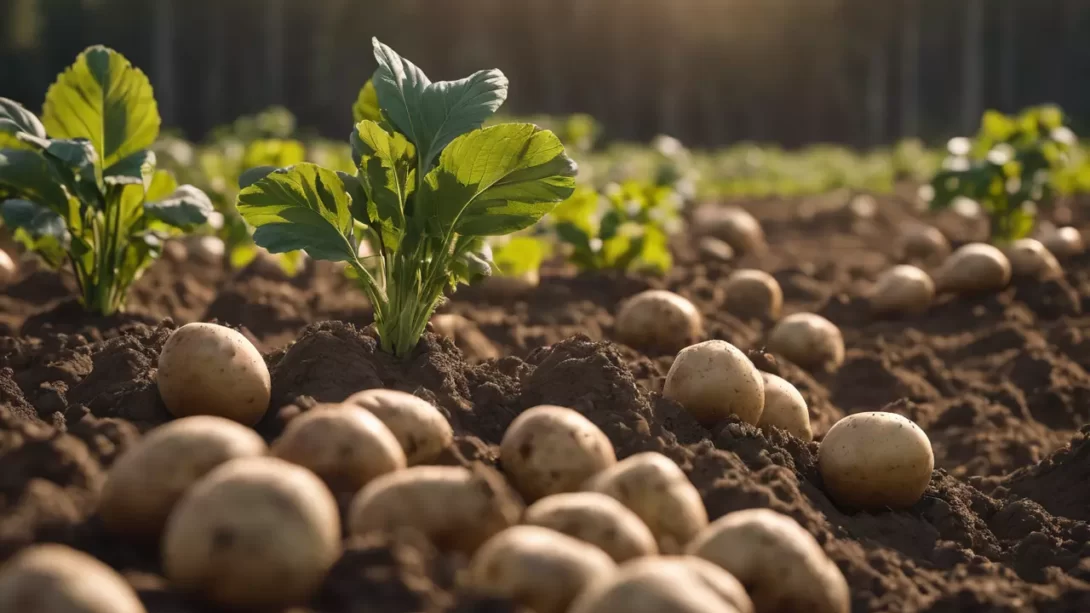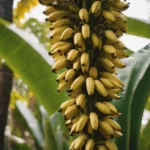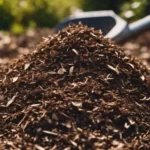Embarking on the journey of potato cultivation in Zone 5 requires a keen understanding of the region’s distinctive climate and the specific nuances that influence successful potato growth. Timing is paramount in ensuring a robust harvest, making it crucial for gardeners in Zone 5 to navigate the planting season with precision. In this guide, we delve into the optimal timeline for planting potatoes in Zone 5, considering the unique climatic conditions of the region. From frost dates to soil preparation and recommended potato varieties, this guide aims to equip Zone 5 gardeners with the knowledge needed to cultivate a thriving potato crop.
Zone 5 Climate
Zone 5, with its diverse weather patterns and temperature fluctuations, poses both challenges and opportunities for potato cultivation. As gardeners navigate the potato growing season, they must grasp the intricacies of Zone 5’s climate. From the average last spring frost date to temperature ranges throughout the season, these factors play a pivotal role in determining the ideal window for planting potatoes. Understanding Zone 5’s climate provides the foundation for making informed decisions about when to embark on the potato planting journey.
Recommended Potato Varieties for Zone 5
Zone 5 gardeners are presented with a spectrum of potato varieties, each uniquely suited to the region’s climate. Early, mid, and late-season potatoes offer a range of choices, allowing gardeners to align their potato cultivation with the specific conditions of Zone 5. Early varieties, such as Yukon Gold or Red Norland, provide a quicker harvest, while late varieties like Russet Burbank offer an extended growing season. By exploring the characteristics of these varieties, gardeners can make informed choices that optimize their potato harvest in Zone 5’s dynamic climate.
Planting Time for Zone 5
The success of potato cultivation in Zone 5 hinges on choosing the right time for planting. As spring heralds its arrival, Zone 5 gardeners should be mindful of the average last spring frost date. Planting potatoes too early exposes them to the risk of frost damage, while delaying planting might limit the growing season. A general guideline is to aim for planting when the soil temperature reaches around 45 to 50 degrees Fahrenheit. This careful timing ensures that the potato plants have a conducive environment for robust growth without the threat of late frosts. By aligning planting with the unique climate of Zone 5, gardeners set the stage for a productive potato season.
Preparing the Soil
Before the first seed potato finds its place in the soil, diligent soil preparation lays the groundwork for a successful potato harvest. Zone 5 gardeners should focus on soil that is well-draining and rich in nutrients. A loamy, slightly acidic to neutral soil pH is ideal for potatoes. Incorporating organic matter, such as compost, enhances soil fertility and structure. Gardeners should address any soil deficiencies by conducting soil tests and amending accordingly. As the potato plants develop, the well-prepared soil provides a nurturing environment, allowing the tubers to form and mature without impediments. Through careful soil preparation, Zone 5 gardeners pave the way for a flourishing potato crop.
- 🌳 PROFESSIONALLY MIXED IN THE USA – Each bag is hand blended on our small family farm with premium horticultural grade ingredients: Coco Coir, Canadian Peat Moss, Perlite, Worm Castings- 1 QUART BAG
- ✅ PROMOTES RAPID ROOT DEVELOPMENT: With extra perlite and low-salt coconut coir, GARDENERA soil promotes rapid root development .
- 💧 SUPER MOISTURE DRAINAGE- Protects roots by quickly draining away excess water but keeping dirt moist for nutrient retention, best mimics their natural outdoor environment.
- ✅ APPROVED FOR ORGANIC GROWING: All Gardenera Organics premium potting soils are made in the USA 🇺🇸 and contain no additives, proving them great for use in organic growing.
- 🌱 DEVELOPED BY PLANT PARENTS FOR PLANT PARENTS – Crafted specifically to support the growth of Potatoes. This high quality hand crafted mix is great for Potatoes. It will allow your plant to grow and become large and healthy.
Planting Process
With the soil primed and the optimal planting time identified, the planting process in Zone 5 unfolds with precision. Seed potatoes, chosen based on the preferred varieties for the region, are chitted or pre-sprouted to encourage robust growth. Planting should be done at the recommended spacing, typically around 12 to 15 inches apart, ensuring each seed potato has ample room to develop. The depth of planting is crucial, with gardeners aiming for approximately 4 to 6 inches deep. As the potato plants emerge, hilling—piling soil around the base of the plants—becomes a key practice to protect developing tubers from exposure to sunlight. This planting choreography sets the stage for a thriving potato patch in Zone 5, maximizing the potential for a bountiful harvest.
Caring for Potatoes
Once the potato plants are nestled in the soil, ongoing care becomes paramount for their health and productivity. Adequate watering, especially during dry periods, ensures that the soil remains consistently moist but not waterlogged. Fertilizing at key points in the growing season, particularly when plants begin to flower, provides the additional nutrients essential for robust tuber development. Vigilance against pests and diseases is crucial, with regular inspections and prompt action to address any issues. As the potato plants flourish in the Zone 5 climate, the practice of hilling continues throughout the growing season, providing essential support for the developing tubers. Through diligent care, Zone 5 gardeners foster the growth of healthy potato plants that promise a rewarding harvest when the time is ripe.
- PREMIUM QUALITY INGREDIENTS – Cz Garden Muriate of Potash is a water soluble, high purity, premium phosphate fertilizer for all indoor/outdoor flowers, lawn, and garden vegetables.
- POWERFUL POTASSIUM FERTILIZER highly concentrated potassium supplement designed to increase the density of your flowers and fruits. Potassium is a catalyst for carbohydrate metabolism and aids in the synthesis of proteins and amino acids. Adding high levels of potassium may lead to thicker, heavier flowers with massive yields.
- RESEALABLE, EASY POUR PACKAGING: Cz Garden 0-0-60 Muriate of Potash fertilizer comes sealed in a 5lb, heavy duty resealable pouch. Pour the necessary quantity with ease and store the rest for future use.
- COUNTRY OF ORIGIN: USA – Cz Garden fertilizers and soil amendments are manufactured in the USA from the highest quality ingredients. Buy with confidence!
- Cz Garden Organics is committed to developing Premium Grade custom soil amendment blends, fertilizers, and nutrients for your organic garden.
Harvesting and Storing Potatoes
As the potato plants reach maturity in Zone 5, the anticipation of harvest sets in. The timing for harvesting is critical, typically occurring when the plants have yellowed and begun to die back. Carefully dig around the plants to unearth the treasure beneath—the potatoes. Gently lift the tubers from the soil, being cautious not to damage them. After harvesting, curing the potatoes in a cool, dark place for about two weeks promotes skin thickening, enhancing their storability. Storing potatoes in a cool, dark, and well-ventilated space, preferably in a root cellar or a cool basement, safeguards them against premature sprouting and spoilage. Zone 5 gardeners, armed with the knowledge of optimal harvesting and storage practices, can relish the fruits of their labor well beyond the growing season.
Common Issues and Solutions
Navigating the potato cultivation journey in Zone 5 may encounter hurdles, but awareness and prompt action can address common issues. Late frosts pose a risk, and protective measures, like covering plants during cold snaps, can mitigate potential damage. Pests, such as Colorado potato beetles, require vigilant monitoring and intervention through organic or chemical means. Diseases like late blight can be curtailed by choosing disease-resistant potato varieties and proper spacing to encourage airflow. Soil-borne issues, such as scab, necessitate maintaining optimal soil pH and moisture levels. By proactively addressing these challenges, Zone 5 gardeners can overcome obstacles and foster a successful potato harvest.
Conclusion
In the rich tapestry of Zone 5 gardening, cultivating potatoes becomes a nuanced dance with climate, timing, and attentive care. From the meticulous planting process to the diligent care and vigilant problem-solving, Zone 5 gardeners invest in a journey that culminates in a harvest of earthy treasures. As the last potatoes are unearthed and stored for the months ahead, the satisfaction of a successful potato season in Zone 5 echoes the resilience of nature and the dedication of the gardener. With each harvested tuber, Zone 5 gardeners reap not only a bounty of potatoes but also the rewards of understanding, adapting, and thriving in the unique rhythm of their regional climate.






